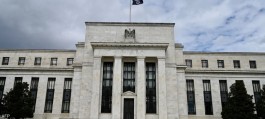The dollar steadied on Monday, after data last week showed U.S. inflation remained stubbornly stubborn, casting doubt on when the Federal Reserve will start its monetary easing cycle, while the yen remained weak near the psychologically important 150-per-dollar level.
US markets are closed today for the Presidents' Day holiday, and trading volumes are likely to be low during the day.
The yen has been hovering around 150 for the past few days, prompting officials to comment on the currency's movements and keeping markets on alert for possible intervention by Japanese authorities to stabilize the currency.
The yen rose 0.20 percent on the day to 149.94 per dollar, but is still down about 6 percent this year, while the yen against the euro is hovering around a three-month low of 161.925.
The dollar index, which measures the greenback against six major currencies, started the week little changed at 104.20 after posting five straight weeks of gains. The index has risen 3 percent this year as traders revised their expectations for interest rate cuts.
Data last week showed that U.S. producer and consumer prices rose more than expected in January, with inflation apparently holding steady, raising the possibility that the Federal Reserve will delay cutting interest rates.
The CME FedWatch tool showed that traders are now betting on June being the starting point for the easing cycle, compared with expectations at the start of the year that it would be in March.
Traders are focusing this week on the minutes of last month’s Federal Reserve meeting, due on Wednesday. Several US central bank officials are also scheduled to speak this week, including Christopher Waller and Raphael Bostic.
The euro was trading at $1.0782, while the pound sterling reached $1.26205, up 0.16 percent on the day.
The Australian dollar rose 0.15 percent to $0.6542, while the New Zealand dollar advanced 0.24 percent to $0.6139 as Chinese markets returned from a long holiday with modest gains.
The Chinese yuan fell against the dollar on Monday, but losses were limited by signs of increased holiday spending.



































